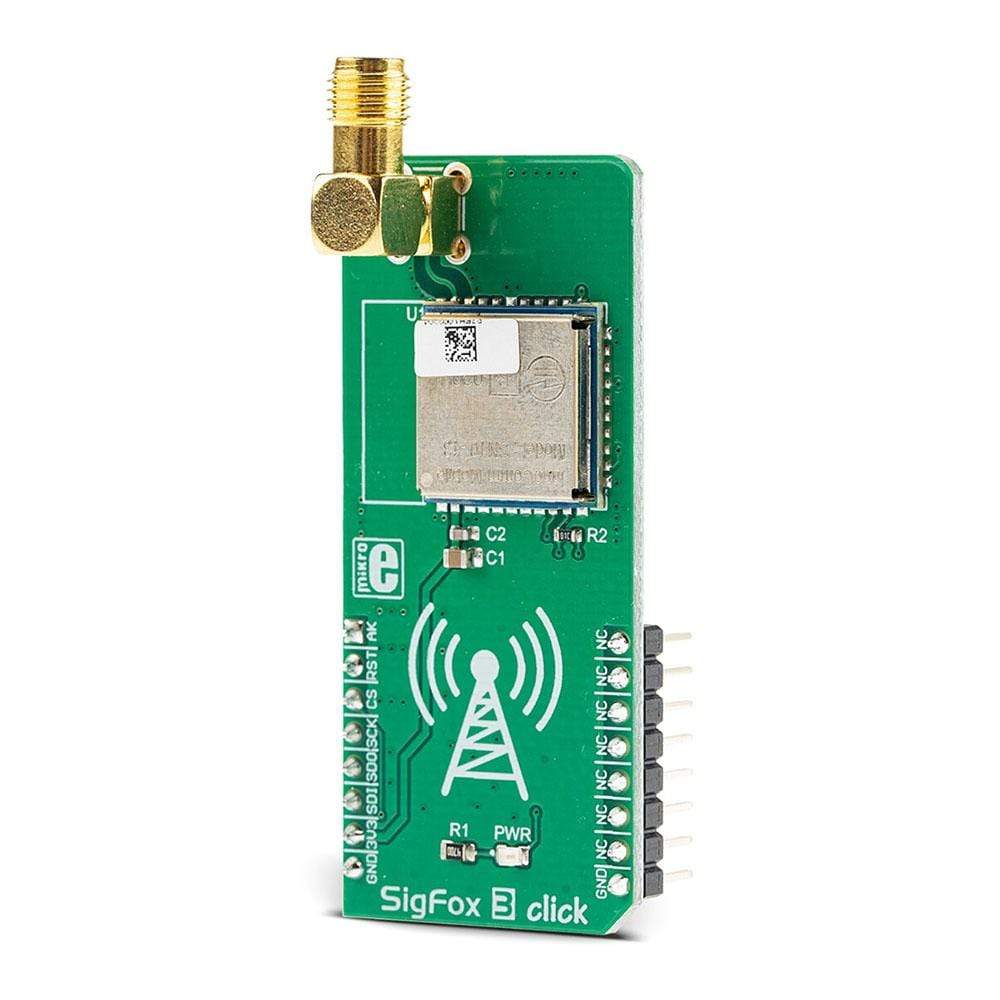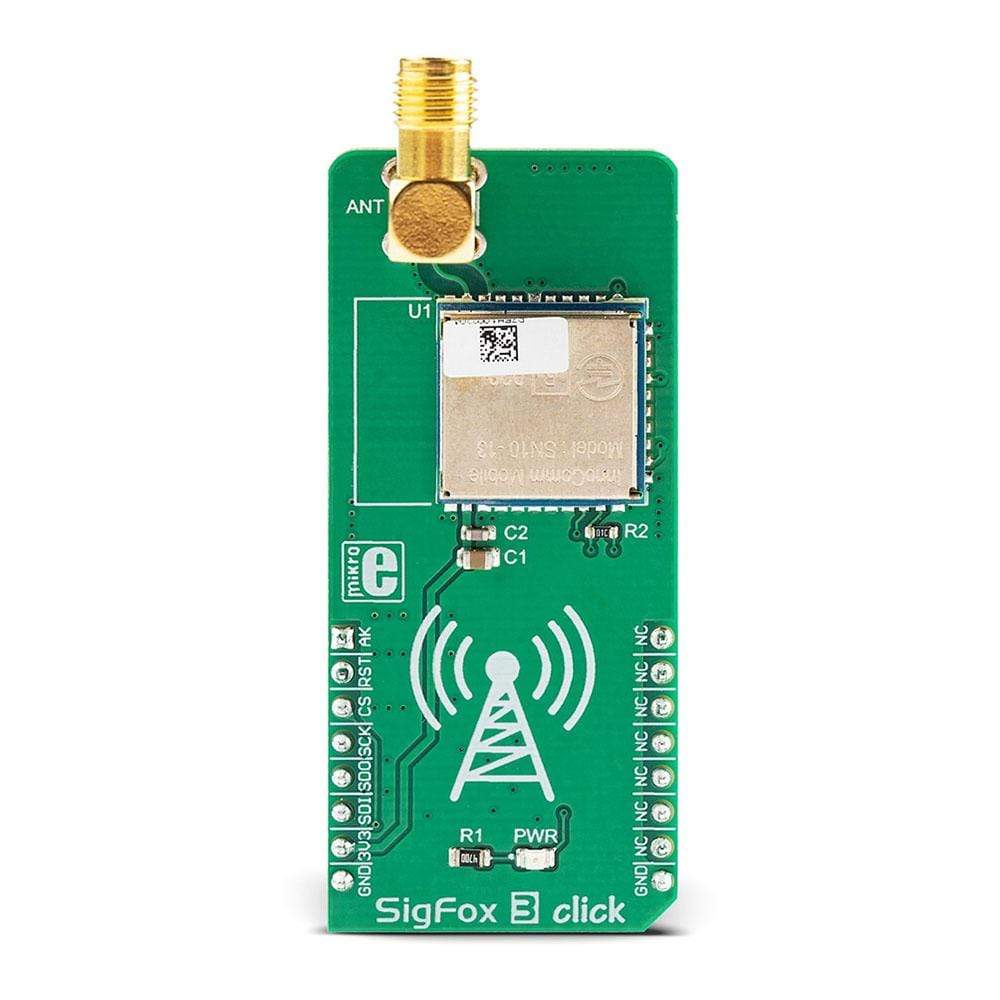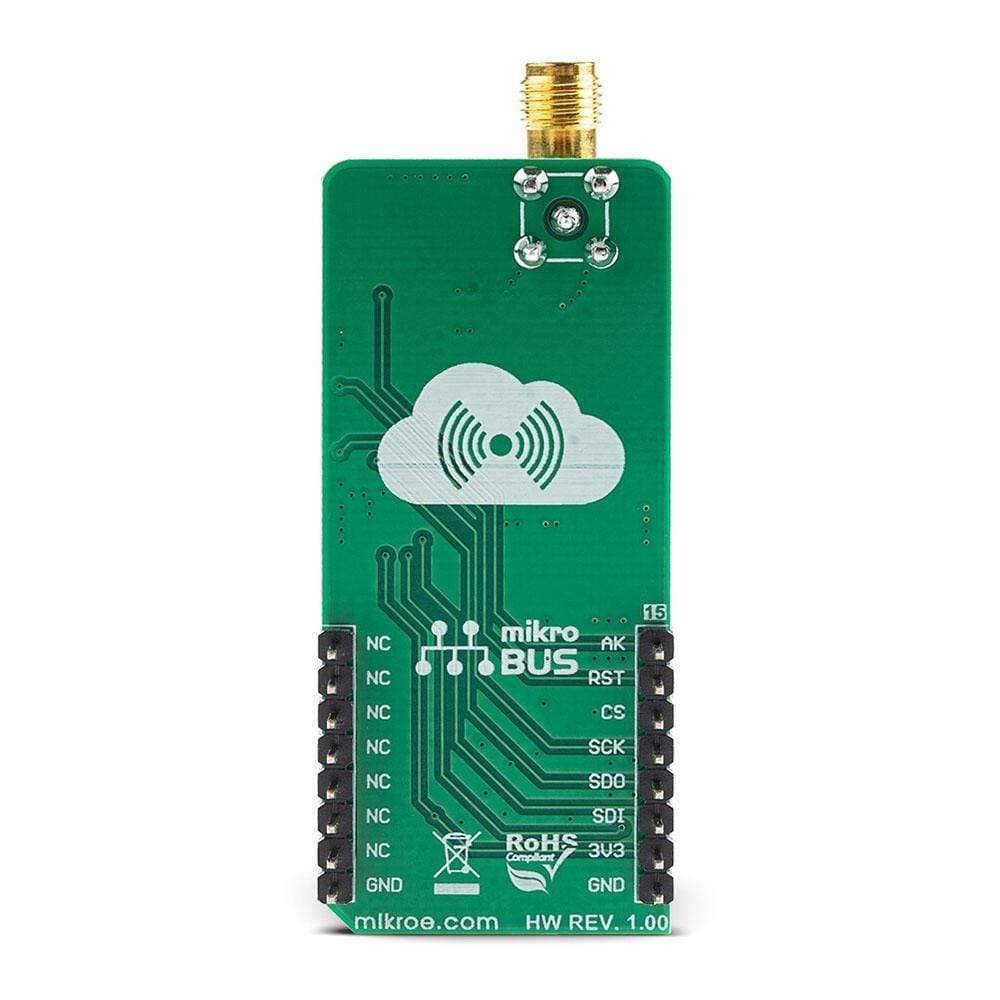


Overview
The SigFox 3 Click Board™ for Japan is a device that carries the SN10-13, a fully integrated Sigfox™ certified module by InnoComm, allowing connection to a low power wide area network (LPWAN) that enables communication utilizing the Industrial, Scientific, and Medical (ISM) radio frequency band.
The SigFox Click Board™ comes with a subscription to the Sigfox network for a duration of one year from the moment of activation.
It comes in a package that also includes the mikroSDK™ software and a library with all the functions. The Click Board™ comes as a fully tested and approved prototype, making it a reliable device ready to use on the development board.
Note: The Sigfox 3 Click Board™ is intended to be used in the RCZ3 (Japan).
Downloads
Das SigFox 3 Click Board™ für Japan ist ein Gerät, das das SN10-13 trägt, ein vollständig integriertes Sigfox™-zertifiziertes Modul von InnoComm, das die Verbindung zu einem Low Power Wide Area Network (LPWAN) ermöglicht, das die Kommunikation unter Verwendung des industriellen, wissenschaftlichen und medizinischen (ISM) Funkfrequenzbands ermöglicht.
Das SigFox Click Board™ wird mit einem Abonnement für das Sigfox-Netzwerk für eine Dauer von einem Jahr ab dem Zeitpunkt der Aktivierung geliefert .
Es wird in einem Paket geliefert, das auch die MikroSDK™-Software und eine Bibliothek mit allen Funktionen enthält. Das Click Board™ wird als vollständig getesteter und zugelassener Prototyp geliefert und ist somit ein zuverlässiges Gerät, das sofort auf der Entwicklungsplatine verwendet werden kann.
Hinweis: Das Sigfox 3 Click Board™ ist für die Verwendung im RCZ3 (Japan) vorgesehen.
| General Information | |
|---|---|
Part Number (SKU) |
MIKROE-3163
|
Manufacturer |
|
| Physical and Mechanical | |
Weight |
0.025 kg
|
| Other | |
Country of Origin |
|
HS Code Customs Tariff code
|
|
EAN |
8606018713578
|
Warranty |
|
Frequently Asked Questions
Have a Question?
Be the first to ask a question about this.



